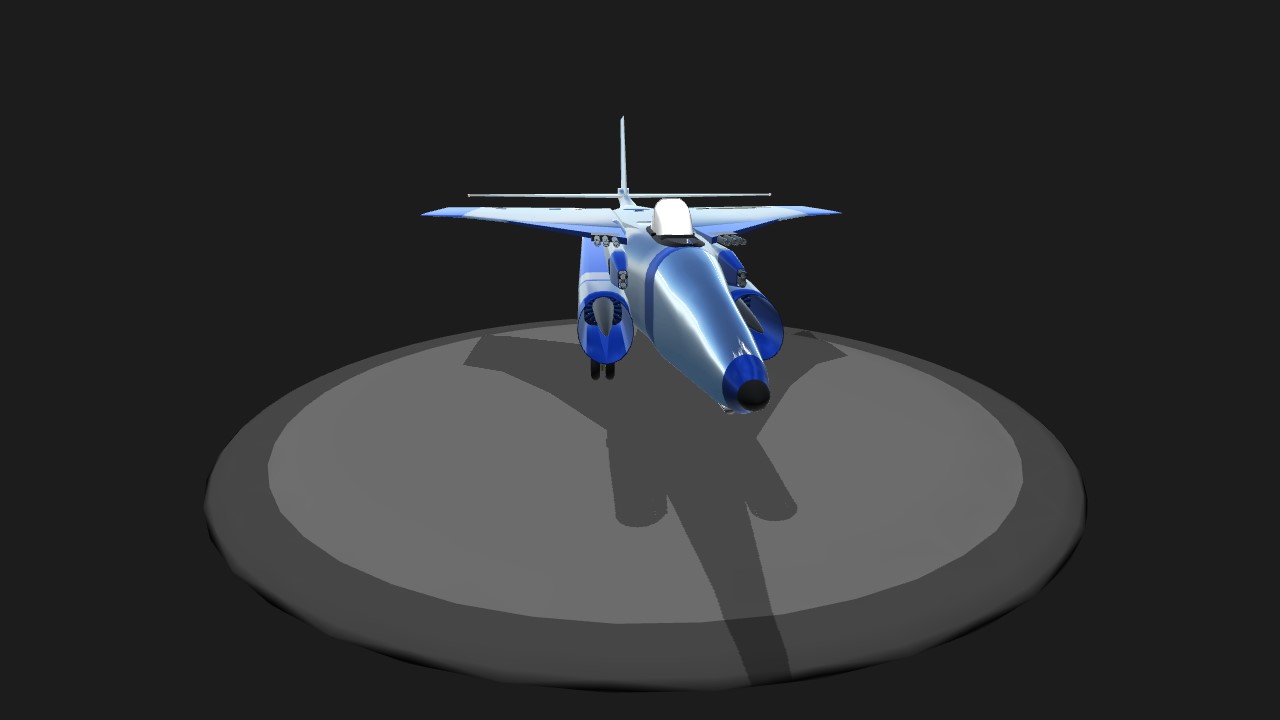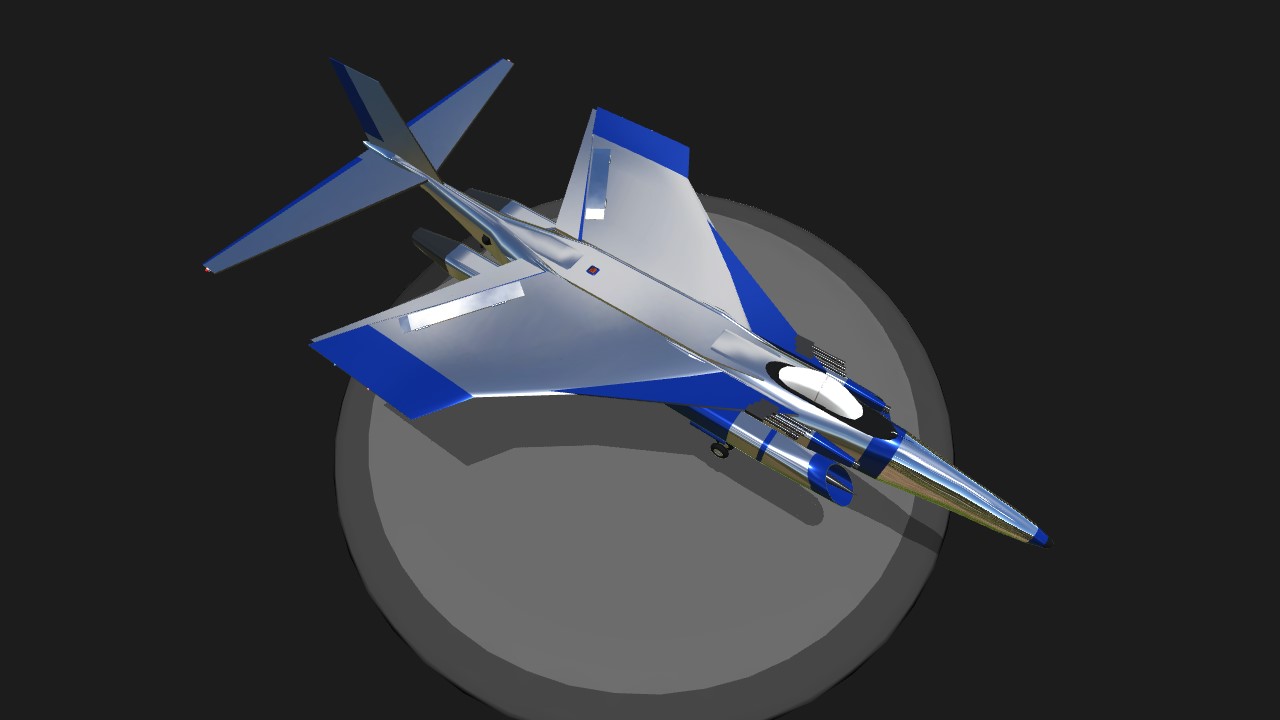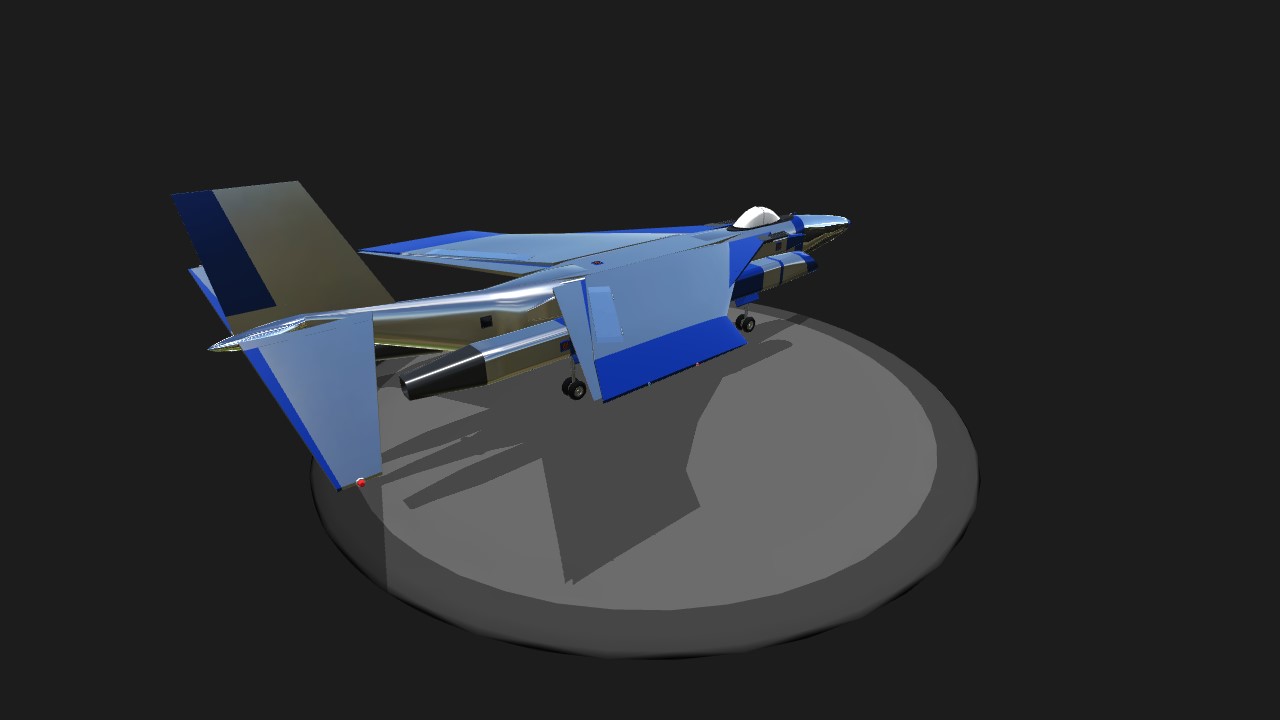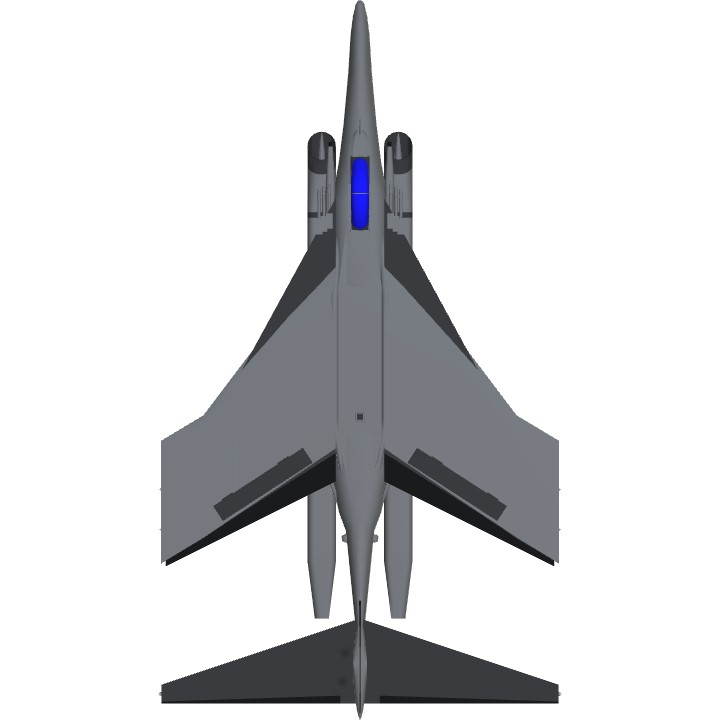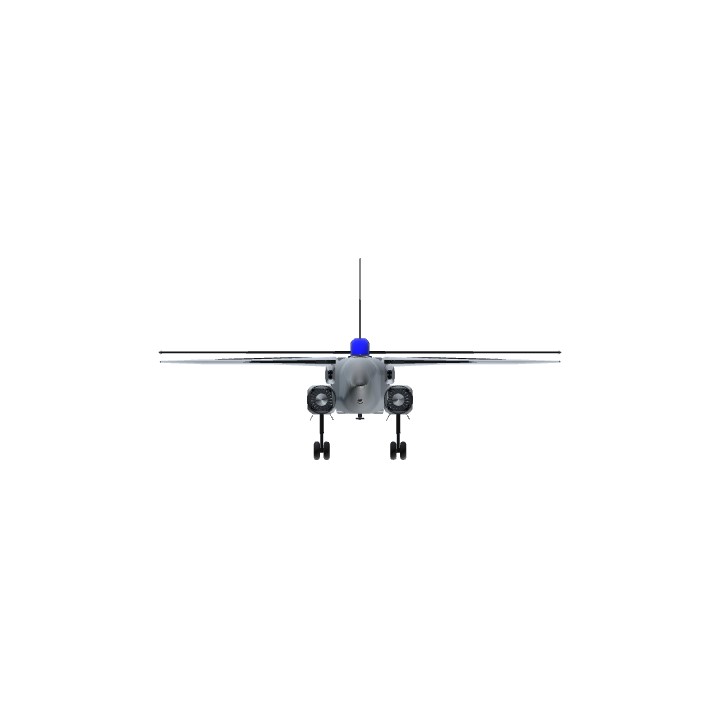After the initial success of the original 'Silverine' rushed production model, AAB engineers sought to refine the craft to a much finer design. This craft was enough of a redesign that the number of parts it shares with the original 'Sturgeon' platform shrunk to less than half. AAB took a subsonic airframe made transonic up to a truly capable supersonic fighter/bomber
The B model was put into service in 55', just 3 years after the original Silverine. With upgraded engines and flight surfaces came a new top speed above 1000 mph in the right conditions. Models refitted with light bombloads could swoop in and strike before some of the Arcanix's less advanced peers even knew they were there.
This craft was now a very straightforward design filling the supersonic escort fighter/bomber role. For its time this craft saw itself kitted with some impressive equipment. Top of the line guided a2a munitions were installed into a retracting armament plate. (This was to make use of the as standard bay that the Sturgeon platform has.) State of the art avionics and propulsion machinery were also as standard. The craft could be refitted to hold light-medium bombloads. The avionics were periodically upgraded in this design to the point where the Silverine was one of the first craft capable of launching the 'computerized' Aardvark cruise missile. (not equipped :))
The plane came about as a need was saw by command in AAB for a fighter that didn't require petitioning either the AAD or AAI branches for a unit. So they set up a temporary task group for a select group of people from both of those branches to come in and draw up a fighter using existing platforms in the AAB wheelhouse. After much revision to the original model, we've arrived at a very competent and smooth aircraft in the B model.
There were still some drawbacks to using a previously subsonic prop-plane shell. The craft could be very unstable when handled by inexperienced pilots once it hit speed. Some overzealous flyers jump into situations with interceptors that this plane was not meant to handle, and due to this, the B model Silverine actually suffered more losses in the conflicts following its entry to service. Another downside was the lack of space in the armament bay. What was originally meant to carry 2 and 5 hundred pound bombs struggled to fit some of the larger munitions in service at the time.
Regardless the plane was much loved and much modified since its initial deployment. It is appreciated by those its escorted as well as those who've flown and fought in it. During the first few Legault conflicts it was instrumental.
Silverine is meant to be flown most efficiently around the 32-40k ft area. Drag and instability means that during normal flight trimming is a necessity. Take care when supersonic, this is not a ballerina. If there's ever an event where your jet propulsion is taken out by enemy fire, fear not as the Silverine used complimentary ducted turbine propulsion taken from some sister projects. The ducted fan arrangement was not set up to be high performance and should only be used when experiencing engine cutout. The main jet assembly will open up to allow exclusive flow when triggered. Those motors have gotten many pilots home safely when gliding is not an option. Your top speed with these on will be dependent on glide and gravity, but will usually be in the 180/200 range.
AG1-Missile bay and munition plate (VTOL down)
AG2-Wing rotation (for carrier retrieval, this is not a naval craft)
AG3-Running lights
AG4-Hook
AG5-Safety motor kick in for duct turbine
AG6-Airbrakes and chute
AG7-Landing light
AG8- Engine out
Specifications
General Characteristics
- Created On Windows
- Wingspan 34.9ft (10.6m)
- Length 62.5ft (19.0m)
- Height 17.4ft (5.3m)
- Empty Weight 21,506lbs (9,755kg)
- Loaded Weight 35,271lbs (15,998kg)
Performance
- Power/Weight Ratio 1.784
- Horse Power/Weight Ratio 0.056
- Wing Loading 51.6lbs/ft2 (251.7kg/m2)
- Wing Area 684.2ft2 (63.6m2)
- Drag Points 4985
Parts
- Number of Parts 147
- Control Surfaces 7
- Performance Cost 887

